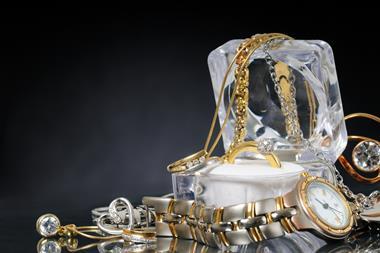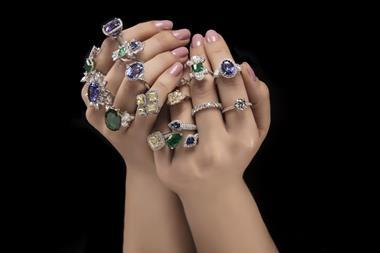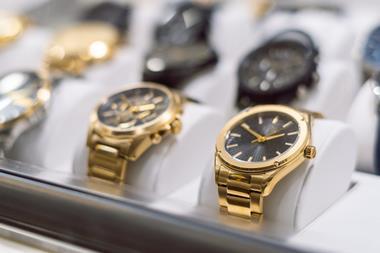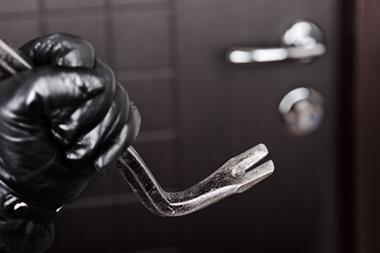Brokers have a key role in advising clients about the dangers of sharing details of their valuables on social media, as well as helping to prevent underinsurance
High net worth (HNW) individuals who post images or videos of their home, belongings or holidays on social media are creating an inviting “weak spot” for criminals to target – as proven by a recent slew of high profile burglaries.
For example, in October 2021, ex-Love Island star, social media influencer and creative director of online fashion store PrettyLittleThing Molly-Mae Hague fell victim to an £800,000 burglary at her Manchester home – the property was raided by a gang while Hague was in London with her boyfriend.
Olympic cyclist Mark Cavendish was also targeted by criminals in November 2021. He was held at knifepoint alongside his family while theives stole two watches and designer luggage.

Back in 2016, meanwhile, reality TV personality Kim Kardashian West was robbed of £5.2m worth of jewellery at gunpoint in Paris after posting about the trip on social media.
Writing about the dangers of HNW individuals being too open on social media in a December 2021 blog article, Geraint Jones, senior private clients executive at Broadway Insurance Brokers, said: ”Material innocently posted on social media becomes a weak spot.
”Images of festive parties, holidays and couples enjoying downtime with their families may seem innocuous. The attention of criminals, though, will not be drawn to smiling faces and Christmas decorations, but [to] any valuables or home security equipment on show.”
Sarah Willoughby, insurer Ecclesiastical’s art and private client development director, agreed with Jones. She told Insurance Times: “It’s about raising awareness for anybody that shares on social media. What are you sharing with the rest of the world? Your hobbies, wealth, possessions, holidays.
“Everybody is not an innocent party. Hackers will watch and are able to pick up on a lot of information.”
Even images of children in school uniforms can allude to times the insured property may be vacant, Willoughby warned. “From a theft perspective, most burglaries happen between 6pm and 6am, but the most common time is 6pm to midnight,” she continued.
Not punishing ’naivety’
For some HNW individuals, however, a personalised and active social media presence is a vital component of their work.
Speaking on a YouTube vlog posted in November 2021, Hague explained: “My job is literally to share my life, that’s how I make a living - the things I buy, where I live, what I do with my boyfriend, where I am going.

”It’s hard to find that balance of sharing, but also keeping my life private so I can stay safe. I think potentially I maybe lost that balance.”
This ”naivety” around social media usage should not impact the success of HNW individuals’ claims, Willoughby emphasised.
“I have never heard of a claim being negated because of social media – it is done in naivety. Actually, you could argue it gives evidence of their belongings,” she said. “We are not in the business of not paying claims - we want to put clients back in the best situation following [a burglary].”
Steve Godbold, external claims operations manager at Covea Insurance, noted that it can be tricky to pinpoint social media as the reason for a HNW break-in, however.
He said: “We can’t stipulate how people present themselves to others. It’s also really difficult to trace it back to say that [social media] was the reason they were targeted.”
More to be done
But, Willoughby added that ”there is still a great deal that could be done by insurance companies, CCTV cameras, brokers [and] end clients” to mitigate the burglary risk posed by social media sharing.
For example, Willoughby recommended not having a regular routine where possible, removing locations on posts and adjusting privacy settings.
To support brokers advising HNW clients, Ecclesiastical created a cyber safety leaflet back in 2019 to help educate policyholders who are sharing information online. The insurer also created a cyber-themed broker pack to “train the trainer” on risks such as Wi-Fi routers - many of these face towards a window, revealing the password to passersby.
Ecclesiastical additionally works with third-party security firm Blackstone Consultancy – the organisations jointly provide brokers with quarterly training around security risks that could impact brokers’ HNW clients.
‘Encouraging’ underinsurance
Advertising personal items via social media additionally feeds into a long-running problem for the HNW sector - underinsurance, particularly around art and jewellery.
Godbold said: “The prices of diamond and gold fluctuate quite wildly on a weekly basis – this can be highly attractive to criminals. For burglaries, jewellery is the number one target. Electrical items are no longer of interest – they are too bulky.
“Having a social media presence where you advertise online can only encourage this. It has been something that has been prevalent in claims over the last few years.”
In terms of the trajectory of burglaries, Godbold noted that pre-pandemic, criminals preferred to target cash and jewellery held in safes because these items are “disposable” and “difficult to trace”.
Although the volume of burglaries then declined during the Covid-19 pandemic, Godbold predicts this will soon increase again following the lifting of lockdown restrictions in January 2022, presenting an opportunity for brokers to ensure their clients have the correct sums insured and that they understand the cover they have bought.
He explained: “Customers that have a disposable income are keen to buy things. Insurance is a second thought and there is possibly an overreliance on the broker to tell them what to do.
“There’s also a lack of knowledge around the insurance policy and what it is supposed to do. With older generation customers, not appreciating how much the value of items like precious gold increases. Diamonds, gold and platinum have increased steadily in value.”
Willoughby, who has been working in the HNW sector for the past 27 years, agreed: “It’s important to get contents, art and jewellery revalued on a regular basis.
”If there is a total loss and you need to replace everything, that is what sums insured should reflect. HNW is so tailored, that’s why you need brokers.”
Godbold recommended that jewellery and additional purchases should be reviewed by HNW clients and their brokers every two to three years, while Willoughby suggested that buildings should be revalued every five years.
Thieves target high profile HNW celebrities

One of the most high profile burglary cases was in 2016, when Kim Kardashian West was robbed at gunpoint by a gang of five men disguised as police officers while staying in a luxury residence in Paris.
The thieves got away with a ring worth €4m (£3.3m) and a jewellery box worth €5m. Come October 2018, global insurance firm AIG revealed that it was suing Kardashian West’s bodyguard, Pascal Duvier, and his firm Protect Security for $6.1m, for alleged negligence.
Meanwhile, supermodel Kate Moss had a piece of Banksy artwork, worth £80,000, stolen from her London home in 2010 while she was asleep.
In 2015, music mogul Simon Cowell experienced thieves swiping £1m worth of jewellery and passports from his home in Holland Park, London.
More recently, in December 2019, England footballer Frank Lampard and his TV presenter wife Christine were victims of a gang that went on a 13-day burglary spree.
Lampard and his wife had £60,000 worth of watches and jewellery seized from their Chelsea home by the gang. In total, the thieves stole £26m in cash, jewellery and gems from a list of high profile celebrities. But last November, three of the gang members were jailed.
Hosted by comedian and actor Tom Allen, 34 Gold, 23 Silver and 22 Bronze awards were handed out across an amazing 34 categories recognising brilliance and innovation right across the breadth of UK general insurance.





















































No comments yet